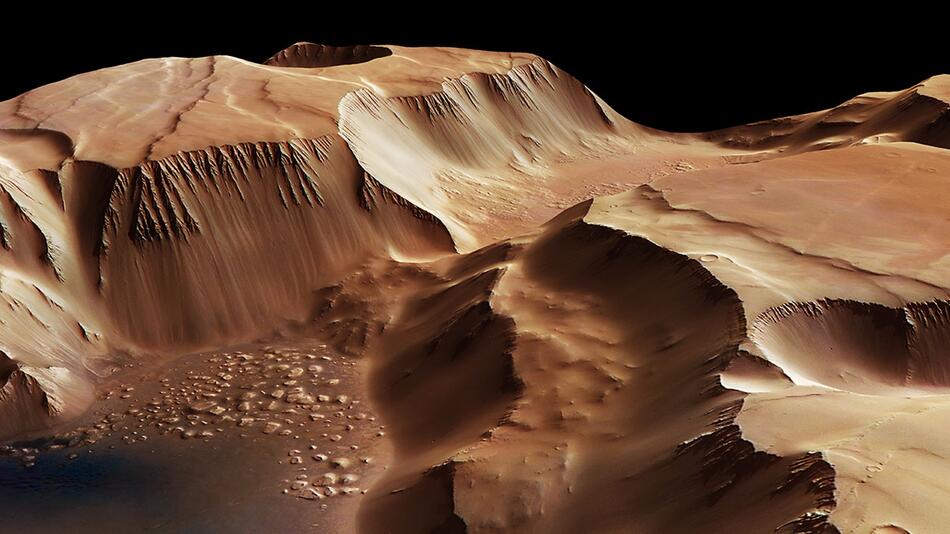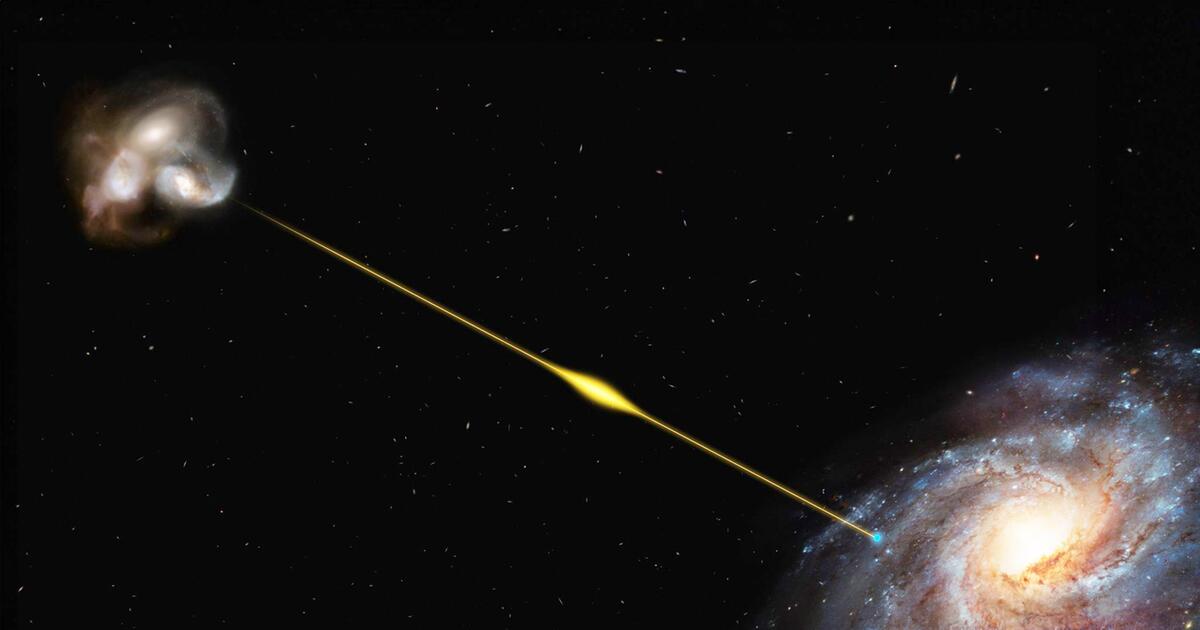Astronomy
Updated October 19, 2023 at 8:04 p.m
Astronomers have known about short radio flashes since 2006. But now a special outbreak has been discovered: it took eight billion years for the radiation to reach Earth. Distance is supposed to help solve the cosmic mystery.
The explosion lasted just over a thousandth of a second – and yet released as much energy as our Sun over the course of 30 years: In June last year, the ASKAP telescope system in Australia recorded a so-called short radio flash: an extremely intense explosion. A violent, short-lived burst of radio radiation in the distant universe. Astronomers often observe such radio flashes, but this one is special: its radio emission took eight billion years to reach Earth. In doing so, it sets a new distance record, like an international research team Reported in “Science” magazine..
ASKAP consists of 36 identical parabolic antennas, each twelve meters in size. “Using this antenna field, we were able to pinpoint the exact place in the sky the explosion came from,” explains first author Stuart Ryder of Macquarie University in Australia. This was important, because it was the only way astronomers could use other telescopes to search for the origin of the radio flash.
Using the European Southern Observatory’s (ESO) Very Large Telescope in Chile, celestial researchers discovered a distant galaxy at the site of the explosion. “It’s much further away than any other radio flash source found to date,” Ryder said. “It probably belongs to a group of galaxies that are merging together.”
Read also: A physicist explains the theory: Did NASA kill potential life on Mars?
Radio bursts are a headache for astronomers
Since their discovery in 2006, radio bursts have puzzled astronomers: What causes these powerful bursts of radiation that last only fractions of a second? A variety of theories have been put forward, most of them relating to neutron stars. These are the burned-out remnants of stars in which matter is packed together as densely as if it existed only in the nuclei of atoms. Neutron star collisions may cause radio bursts. Another possible explanation is the collapse of a neutron star into a black hole. But the lightning energy recorded by ASKAP exceeds theoretical expectations by three and a half times.
Even if astronomers don’t have an explanation for this mysterious phenomenon, they can still use it. Radiation from lightning passes through intergalactic space on its way to Earth and is affected by the thinly distributed gas found there. Researchers call the effect that spreads lightning depending on its wavelength “scattering.” “So the further away we are from a fast radio burst, the greater the amount of intergalactic gas that can be detected,” Ryder says.
With this, researchers hope to track down the missing matter in the universe. “When we calculate the amount of normal matter in the universe – the atoms that make up us all – we find that more than half of what should be there today is missing,” explains co-author Ryan Shannon from Swinburne University of Technology. In Melbourne. “We think the missing matter is hidden in intergalactic space, but it may be too hot and diffuse to be seen using common techniques.” But radio flashes, as the astrophysicist continues, are affected by this matter and thus make it visible.
A Very Large Telescope is being built in Chile
The June 2022 radio flash confirms this assumption, as its dispersion is greater than any radio flash observed to date. Even larger than expected based on previous data from closer radio bursts. Scientists speculate that the radio radiation may have passed through an unusual region of turbulent, magnetized gas.
In order to measure how much gas has been lost between galaxies so far, astronomers need to observe as many radio bursts as possible, and if possible, farther away. This should be possible within a few years: with the Square Kilometer Array, a new radio telescope facility in Australia and South Africa, and the Very Large Telescope with its 39-metre diameter mirror, being built in Chile. (dpa/czech)

The Mars Express rover needed several flybys over Mars before it collected enough images to create an animation of the Martian Valley. (Photo: ESA/DZA/FO Berlin)

“This is how the editorial team works“It teaches you when and what we report bugs, how we handle bugs and where our content comes from. When reporting, we adhere to guidelines Journalism Trust Initiative.

“Subtly charming coffee scholar. General zombie junkie. Introvert. Alcohol nerd. Travel lover. Twitter specialist. Freelance student.”







More Stories
Unreal Engine 5 and offline single player confirmed
Developer Snapshots: Programmer news in a sentence or two
Do you already know Ruona? -Dukchik